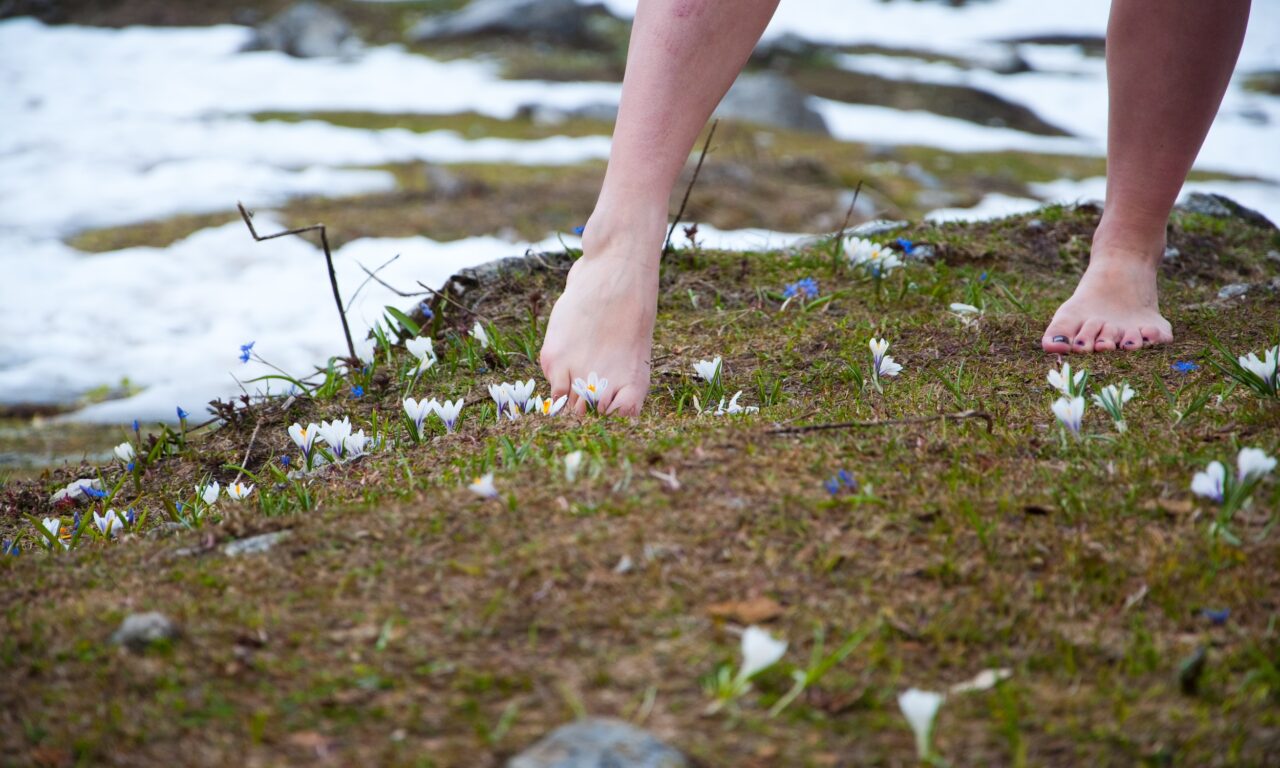It’s no longer news that winter is here, and as a caregiver offering winter care to in-home patients, you need to be prepared for strategic things to ensure it goes smoothly.
In the realm of caregiving, the onset of winter brings forth unique challenges in providing optimal care to in-home patients, demanding a nuanced and compassionate approach to ensure the well-being of in-home patients.
As caregivers, our dedication extends beyond the physical; it encompasses creating a sanctuary that shields our loved ones from the seasonal rigors.
In this comprehensive guide, we will explore practical tips and valuable insights on offering winter care to in-home patients.
Rooted in a professional yet personal perspective, these strategies aim to create a warm, secure, and nurturing environment for our loved ones during the chilly season.
Understanding Winter Health Risks Before Offering Winter Care To In-Home Patients
As a caregiver, understanding the winter health risks that clients face is essential for providing comprehensive and effective care during the colder months. Here are key considerations to be aware of:
1. Respiratory Challenges
Winter air tends to be dry, which can exacerbate respiratory conditions such as asthma, chronic obstructive pulmonary disease (COPD), and bronchitis. Ensure proper heating in the home and maintain humidity levels to alleviate potential respiratory discomfort. Encourage good hydration to prevent dry air-related irritation, and regularly clean and replace air filters.
2. Increased Risk of Falls
Cold weather can impact joint mobility, increasing the risk of falls, particularly for elderly or mobility-challenged clients. As a caregiver, take proactive measures to maintain clear pathways within the home. Install handrails in strategic areas and do other home modifications, use non-slip mats near entrances; and ensure proper lighting to minimize the risk of falls due to wet shoes or snow.
3. Seasonal Affective Disorder (SAD)
Seasonal changes, with reduced sunlight during the winter, can contribute to seasonal affective disorder (SAD), affecting mood and well-being. Encourage exposure to natural light, consider light therapy lamps, and monitor for signs of depression or mood changes. Open communication with healthcare professionals is crucial if symptoms of SAD are observed.
4. Cold-Related Complications
This is one of the most common health risks when offering winter care to in-home patients. Exposure to cold temperatures can lead to serious health issues, especially for clients with pre-existing conditions. Ensure clients are dressed warmly, paying special attention to their extremities with gloves and socks. Monitor for signs of hypothermia, such as shivering, confusion, and weakness, and take swift action if any symptoms arise.
5. Impaired Immune Function
Cold weather is often associated with an increase in respiratory infections and illnesses. Clients with compromised immune systems may be more susceptible. Promote good hygiene practices, including regular handwashing, and encourage flu vaccinations. Collaborate with healthcare professionals to ensure that clients’ immune health is adequately supported.
6. Isolation and Loneliness
Harsh weather conditions may limit social interactions and outdoor activities, contributing to feelings of isolation and loneliness, particularly for clients who live alone. Actively engage in companionship, organize indoor activities, and explore ways to connect with friends and family to combat the potential negative impact on mental well-being. Being aware of these winter health risks equips caregivers with the knowledge needed to implement proactive measures, ensure client safety, and provide holistic care that addresses both physical and emotional well-being during the colder months. Regular communication with healthcare professionals is paramount to adapting care plans based on the specific needs and challenges presented by winter conditions.
10 Items To Get Ready When Offering Winter Care To In-Home Patients
When preparing to offer winter care to in-home patients, it’s essential to ensure a safe and comfortable environment. Here are 10 items to get ready:
1. Well-layered, Warm Bedding
Provide cozy and layered bedding to keep patients warm during colder nights. Consider using flannel sheets, thermal blankets, and additional quilts to maintain a comfortable sleeping temperature.
2. Non-Slip Mats
Place non-slip mats near entrances, in the bathroom, and in areas prone to moisture. These mats help prevent slips and falls, especially when shoes may be wet from snow or rain.
3. Winter Clothing
Ensure patients have appropriate winter clothing, including warm jackets, hats, gloves, scarves, and insulated footwear. Dressing in layers is effective for regulating body temperature.
4. Heating Devices
Check and prepare heating devices, such as space heaters or electric blankets, to keep specific areas warm. Ensure they are in good working condition and follow safety guidelines to prevent accidents.
5. Emergency Supplies
Create an emergency kit with essential supplies, including flashlights, batteries, blankets, and non-perishable food items. In cases of power outages or severe weather conditions, having these supplies readily available is crucial.
6. Medication Stock
Stock up on necessary medications and ensure there is an ample supply to last through the winter. Snowstorms or extreme cold temperatures can disrupt travel and pharmacy access, so it’s essential to be prepared.
7. Warm Beverages
Provide a selection of warm beverages, such as herbal teas, hot cocoa, or broth. Staying hydrated is crucial during the winter, and these beverages also contribute to overall warmth and comfort.
8. Weather-Appropriate Footwear
Encourage the use of weather-appropriate footwear with non-slip soles to prevent slips and falls. Waterproof and insulated boots are especially important in snowy or wet conditions.
9. Indoor Exercise Equipment
Set up indoor exercise equipment suitable for the patient’s abilities. This could include resistance bands, light weights, or exercise DVDs tailored to their fitness level, promoting physical activity during colder days.
10. Set up a communication plan.
Establish a communication plan with emergency contacts and healthcare professionals. Ensure that everyone is aware of the patient’s condition, location, and the caregiver’s contact information. This is vital for a swift response in case of any unexpected situations during the winter. By having these items ready, you can create a winter-ready environment that prioritizes the safety, comfort, and well-being of in-home patients. Keep in mind that you will regularly assess and update these preparations throughout the season to address any changing needs or conditions.
Practical Winter Care Strategies When Offering Winter Care To In-Home Patients
To help you ace your game this winter, here are the strategies we have seen work and are sure will come in handy when offering winter care to in-home patients this winter.
1. Layered Clothing and Warm Bedding
Ensure in-home patients are dressed in layered, warm clothing. Use blankets and bedding designed for winter to maintain a comfortable body temperature. Pay special attention to the extremities by providing warm socks and gloves, minimizing the risk of cold-related complications.
2. Nutrition and Hydration
Adjust dietary plans to include warming, nutrient-rich foods. Hot soups, herbal teas, and fortified beverages can contribute to overall well-being. Encourage hydration, as the dry winter air can lead to increased fluid loss. Monitor for signs of dehydration, as it can be more challenging to detect during colder months.
3. Regular Exercise Indoors
Combat winter lethargy by incorporating indoor exercises suitable for the patient’s abilities. Tailor routines to focus on mobility, flexibility, and strength. This not only promotes physical health but also contributes to mental well-being, offering a constructive outlet during days when outdoor activities may be limited.
4. Keep Abreast With The Weather Updates and Have Emergency Plans
Stay informed about weather forecasts and prepare for inclement conditions. Have an emergency plan in place, including contact information for healthcare providers, transportation services, and nearby emergency facilities. Regularly check that necessary medications, medical supplies, and equipment are readily available.
5. Collaborate with Healthcare Professionals
Maintain open communication with healthcare professionals to adapt care plans to seasonal changes. Discuss any adjustments needed in medications, treatments, or therapeutic activities. This proactive approach ensures that the patient receives continuous and tailored care during the winter months.
Conclusion
Winter care for in-home patients demands a holistic and personalized approach.
By understanding the specific health risks associated with the colder season, implementing practical strategies for warmth and well-being, and fostering clear communication and preparedness, caregivers can create a nurturing environment that promotes winter wellness.
In embracing both the professional and personal aspects of caregiving, we embark on a journey to ensure the comfort, health, and happiness of those entrusted to our care during the winter months.
We hope you find this guide helpful.
If you are in Indiana and looking for how to access quality care services and personalized client care plans, visit Good Hands Home Care Agency, where care is offered with professionalism and efficiency.





